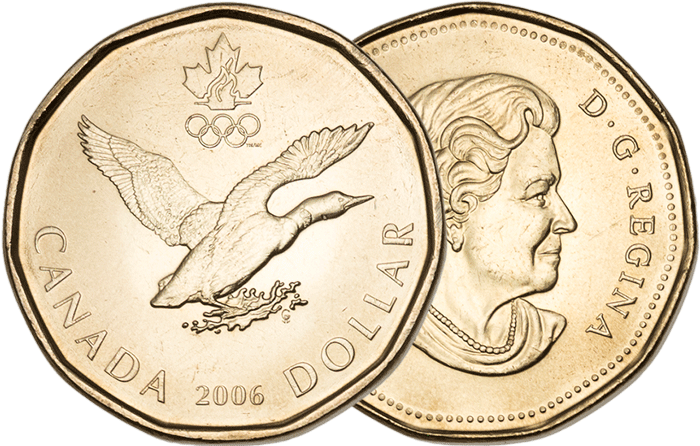Loonie Takes Flight

The Common Loon has appeared on Canada's one dollar coin since its introduction in 1987. When the coin was first introduced, many Canadians -- the vast majority if the popular media was a reliable indicator -- rejected it. The reasons weren't logical ones, just the typical aversion to change. However, unlike the Sacagawea dollar in the United States, Canada's loonie did not fail to take hold. The reason was simple: the Canadian government had the strength to stop production of the dollar note. Soon, the existing notes were worn and gone, and the coin took its place. (And coins from the original issue 19 years ago are still found today.)
Interestingly, the nickname "loonie" was originally one of derision. It rhymed with "Mulroney", Canada's Prime Minister of the day, and arguably the least-liked Canadian Prime Minister by the end of his eight years in office. The coin was sometimes called "Mulroney's Loonie" or simply "Mulloonie." Today it is just called a "loonie" as easily as a "quarter" is called a "quarter." (Or a cent is called a "penny.")
During the 2002 Winter Olympics, the Canadian ice-making team embedded a loonie under centre ice. The Canadian men's hockey team proceeded to win their first gold medal in 50 years. The women's hockey team also won a gold medal, their first ever. And since superstition seems to have a firm home with professional athletes, a legend was born.
In 2004, Canada issued a special loonie, with the Olympic rings and a Canadian Olympic logo in the field above the bird. Now, in 2006 another special Olympic Loonie has been issued. This time, the loon is taking flight. This is the first time the loon has appeared flying on a circulation coin.
Click here for more on the loon, and Canada's first olympic loonie.
